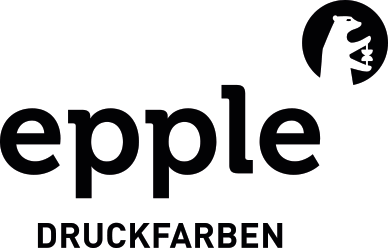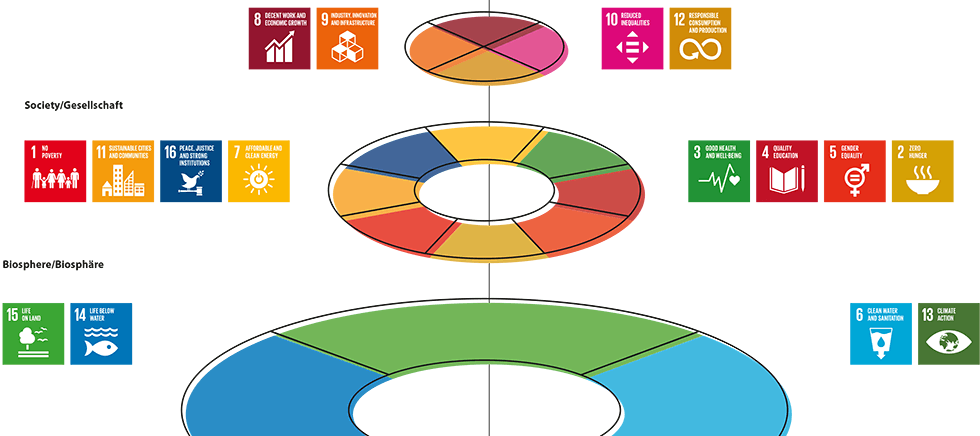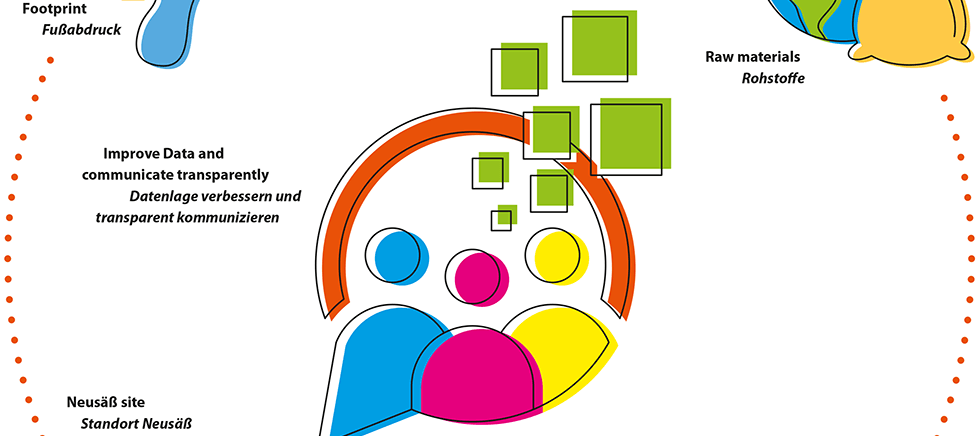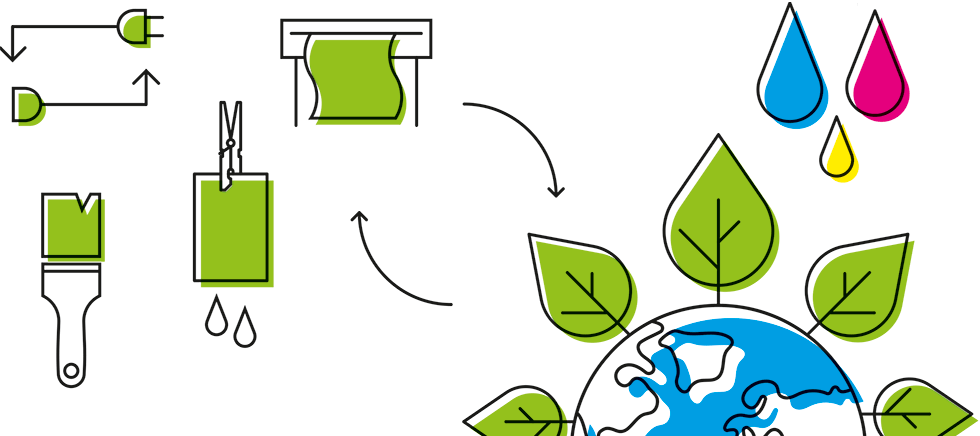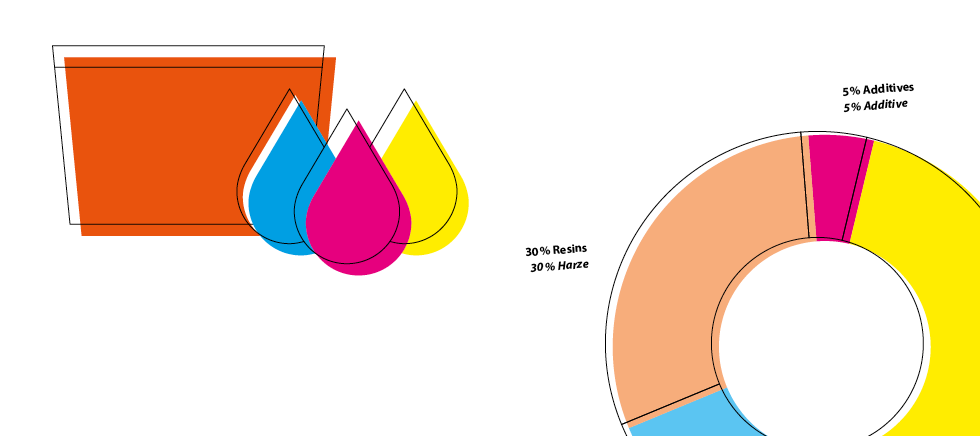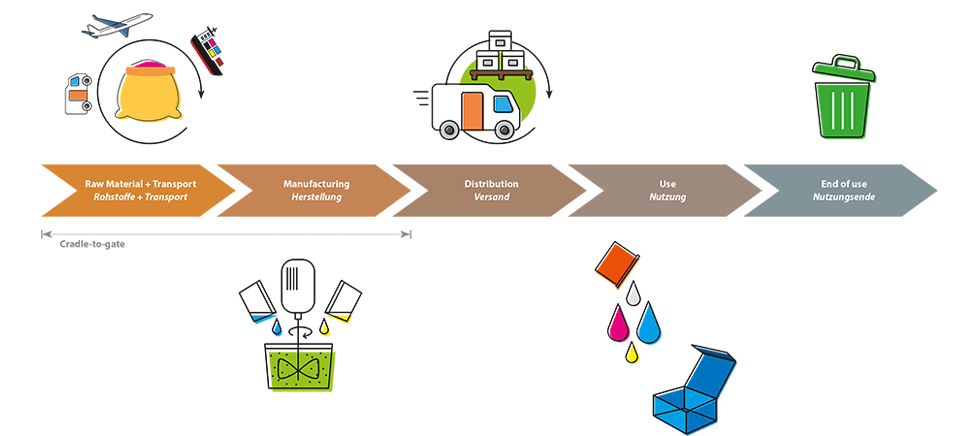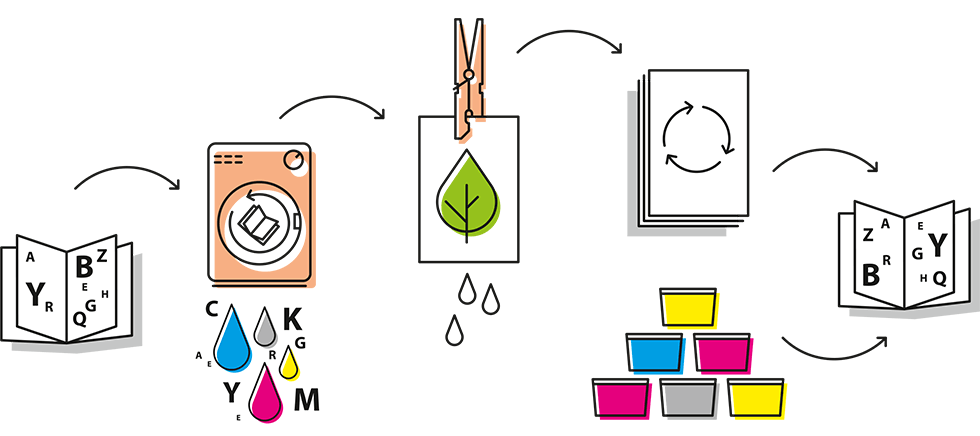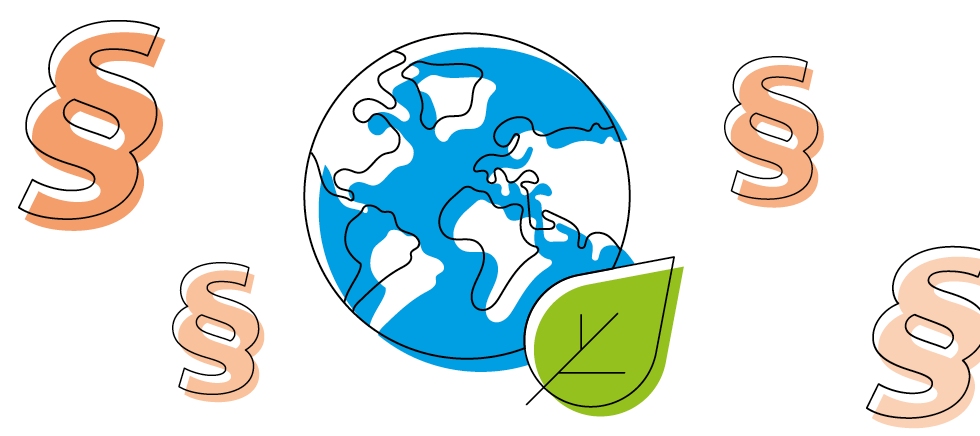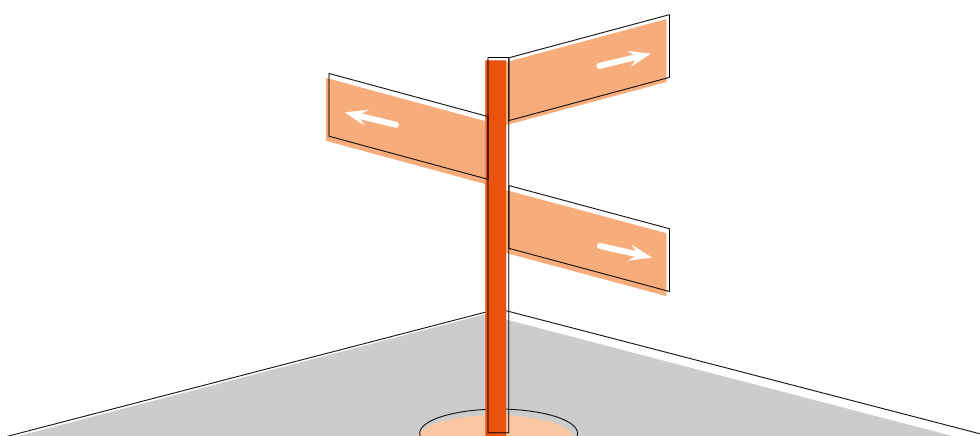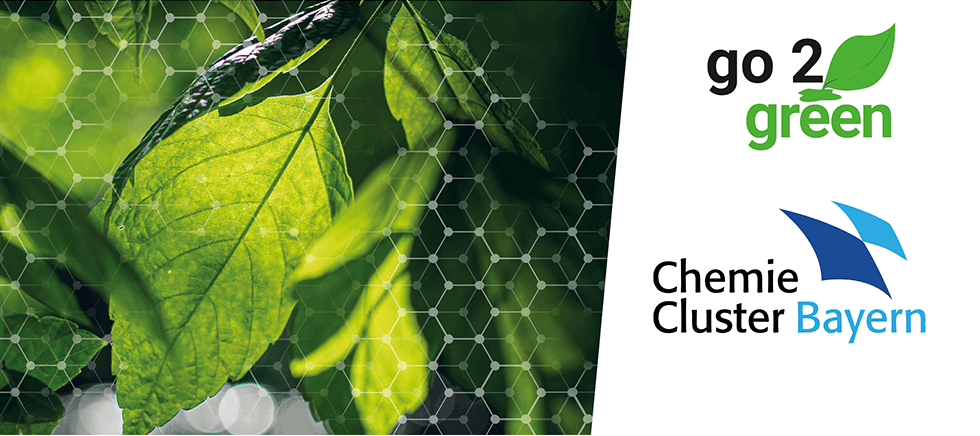Printing inks and sustainability
How ecologically valuable sheetfed offset printing inks are depends on their composition and their life cycle assessment (see page 8). Each ink is a unique mix of individual components. However, almost all inks are composed of a mixture of oils, resins, pigments and additives. To what extent can these primary ink components already be sustainable?
In the offset sector, oils are the solvents and an important part of the binder. Sustainable plant-based oils are currently almost always used – the mineral oils in previous formulations have been replaced. Epple Druckfarben AG was already a pioneer of this development back in the 1990s. In addition to oils, derivatives of natural fatty acids are also used. Plant oils can be used in most areas of modern printing ink production. However, there are still challenges in the supply chain: even though the problematic palm oil is not a part of our formulations, plant oils are often still transported long distances. The demand for plant oils can also lead to competition with the food industry.

Composition of a conventional printing ink
Resins ensure the uniform print quality of the inks. Resins used in printing inks are primarily based on rosin (tree resin) or plant oils in the case of alkyd resins. Resins need to be chemically modified for use in printing inks and this significantly reduces the renewable percentage. Currently, binders are rarely fully organic, but there is potential for a corresponding shift. Technical challenges still need to be overcome before all bio-based binders evidence good printability in future.
Pigments provide colour. Apart from a few exceptions, the market uses organic pigments. However, these pigments are normally obtained through classic synthesis chemistry with petrochemical starting materials – usually in China and India. A more sustainable composition or production of pigments is currently not in sight as process and colour standards still need to be complied with for printing.
Additives define the properties of the ink. These include waxes for protection and rub resistance in order to extend the possible usage phase of printed products. Drying agents (organic metal soaps) are used for rapid drying and further processing, and antioxidants are used to prevent premature ink curing. Another additive: dispersing agents distribute the pigment in the binder more evenly, thereby reducing the quantity of pigment required. Most additives today are still based on petrochemicals, although organic alternatives are being developed, primarily for waxes and dispersing agents.

